By Catherine A. Cardno, Ph.D.
Gulou, in the city of Jiangmen, China, is known for its flat, tidal land that has traditionally been managed by digging ponds and forming soil mounds for fishing and farming. The tidal lands and the fishponds created a fragmented pattern of land and water use in the water villages, as they were known, necessitating numerous bridges. However, urbanization over the decades in the Guangdong-Hong Kong-Macao Greater Bay Area has meant that many of these traditional water villages and the fishing lifestyles they contained have disappeared.
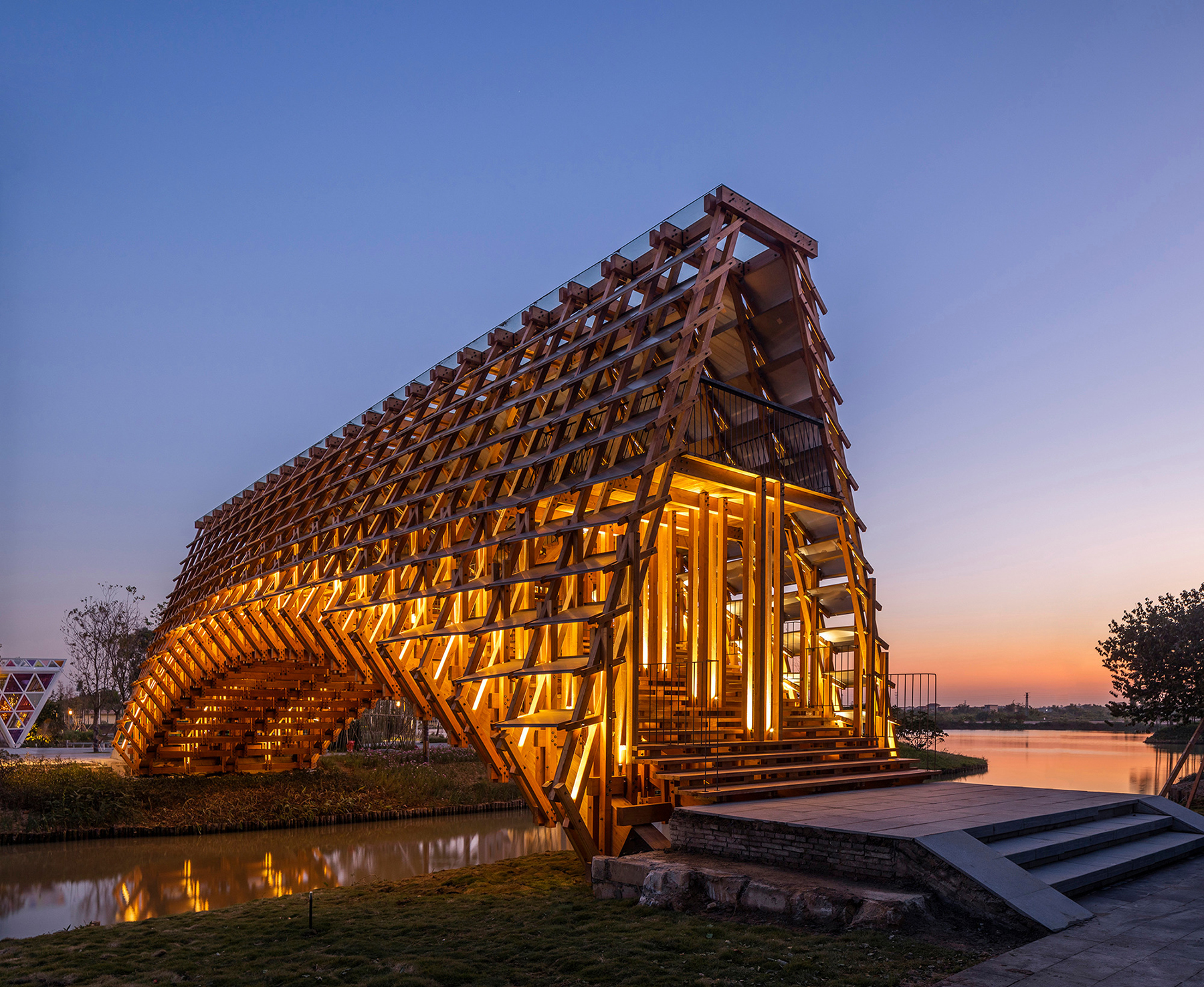
To honor this history, the Gulou Waterfront — an eco-cultural tourism resort — is being developed by Jiangmen OCT Co. Ltd. In an effort to revitalize the rural and cultural history of the area, the resort integrates nature education, family recreation, fishing, and husbandry activities against the site’s historic physical backdrop of tidal lands, soil mounds, and fishponds.
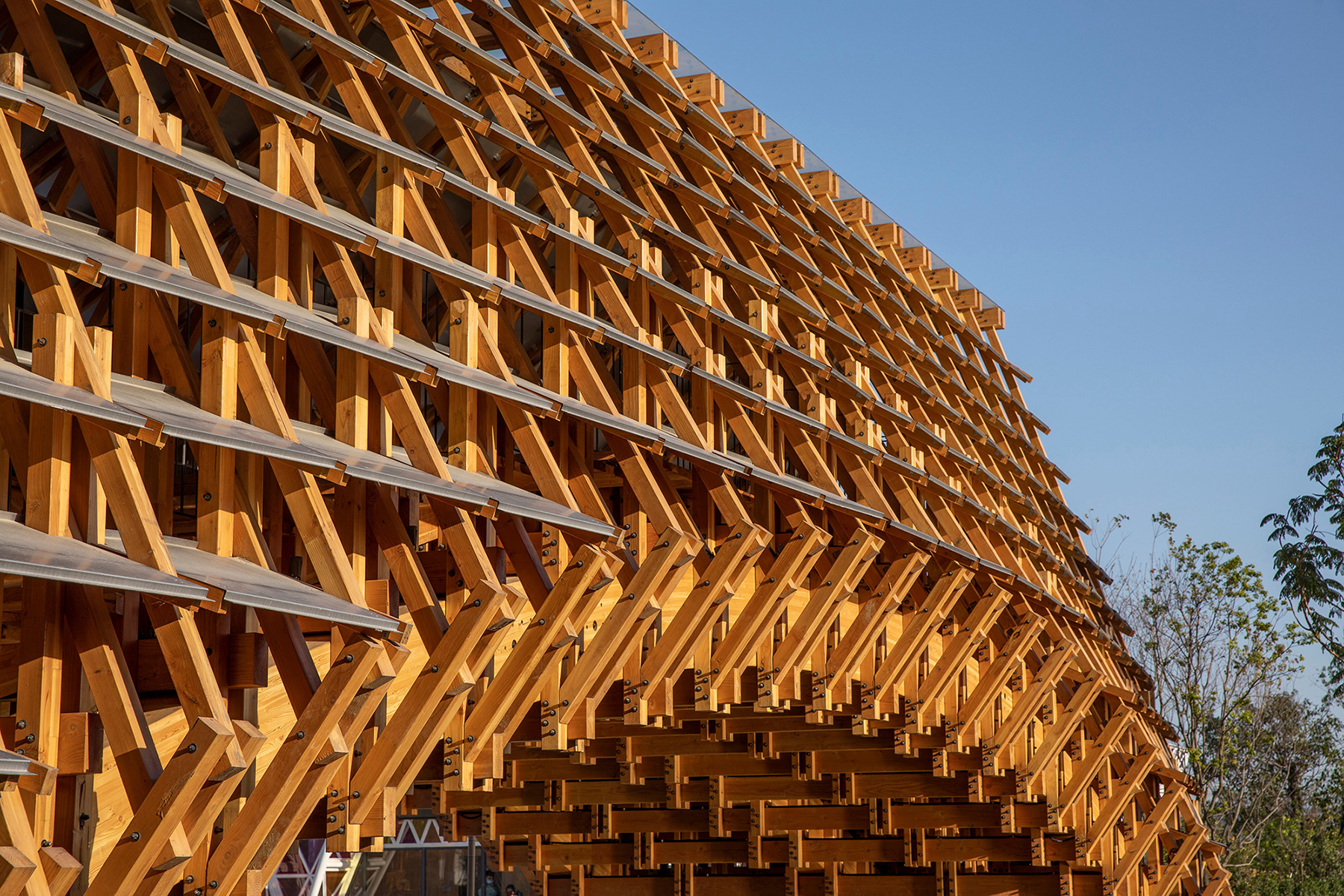
As part of the resort, several bridges — including a 25.2 m long covered timber bridge designed by LUO studio — have been built using traditional materials and design elements.
Traditionally, water villages were traveled either by foot or boat, so bridges had to be arched such that fishing boats could pass beneath; due to the abundant forests in southern China, typically timber was used for the bridges.
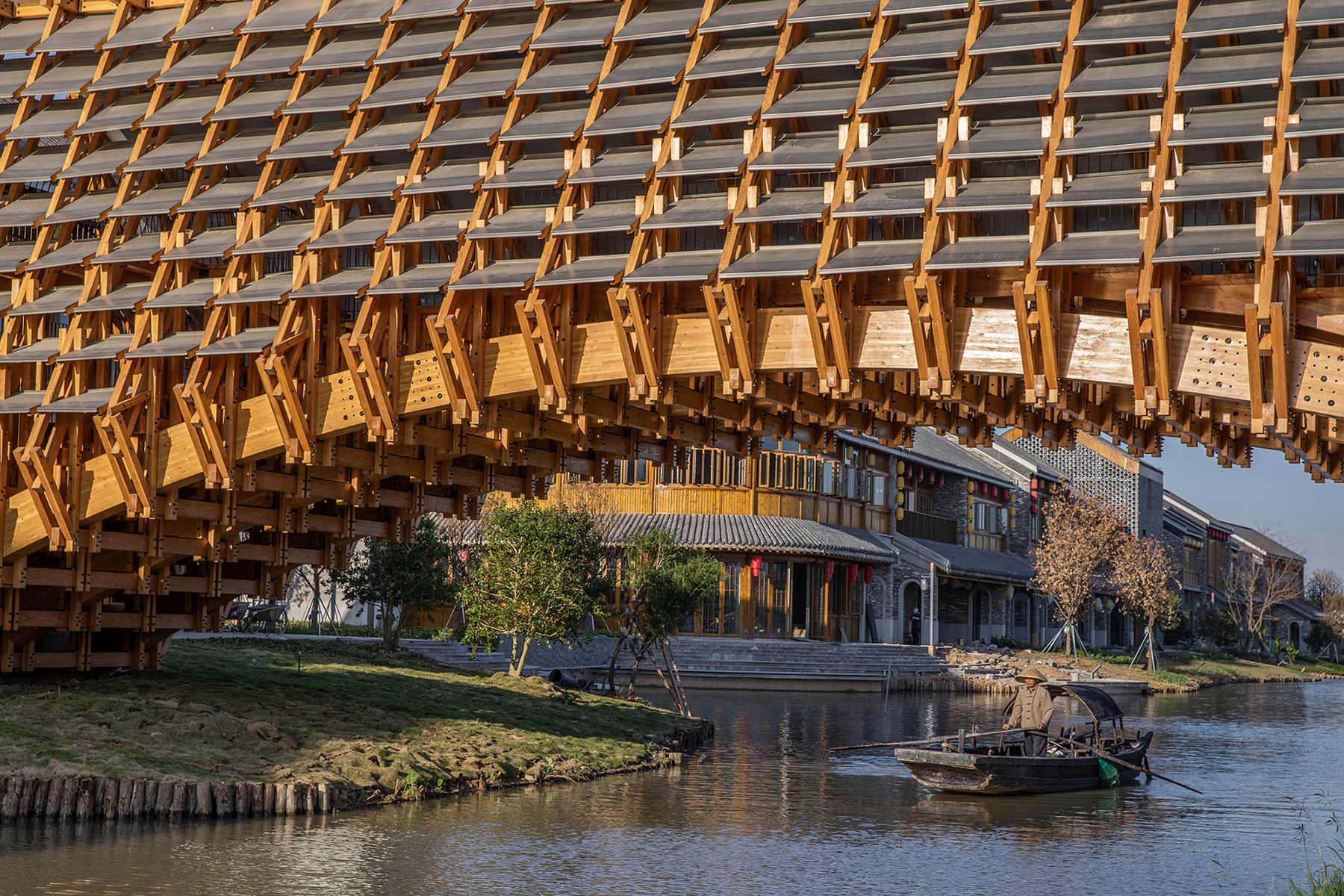
The resort provides access for small fishing vessels as well as larger tour boats, so the bridge is sized to enable boats of various sizes to pass beneath. The load-bearing platform at the bottom of the 2.8 m high arch is 1.35 m higher than normal water level, providing clearance of 4 m at the top of the arch.
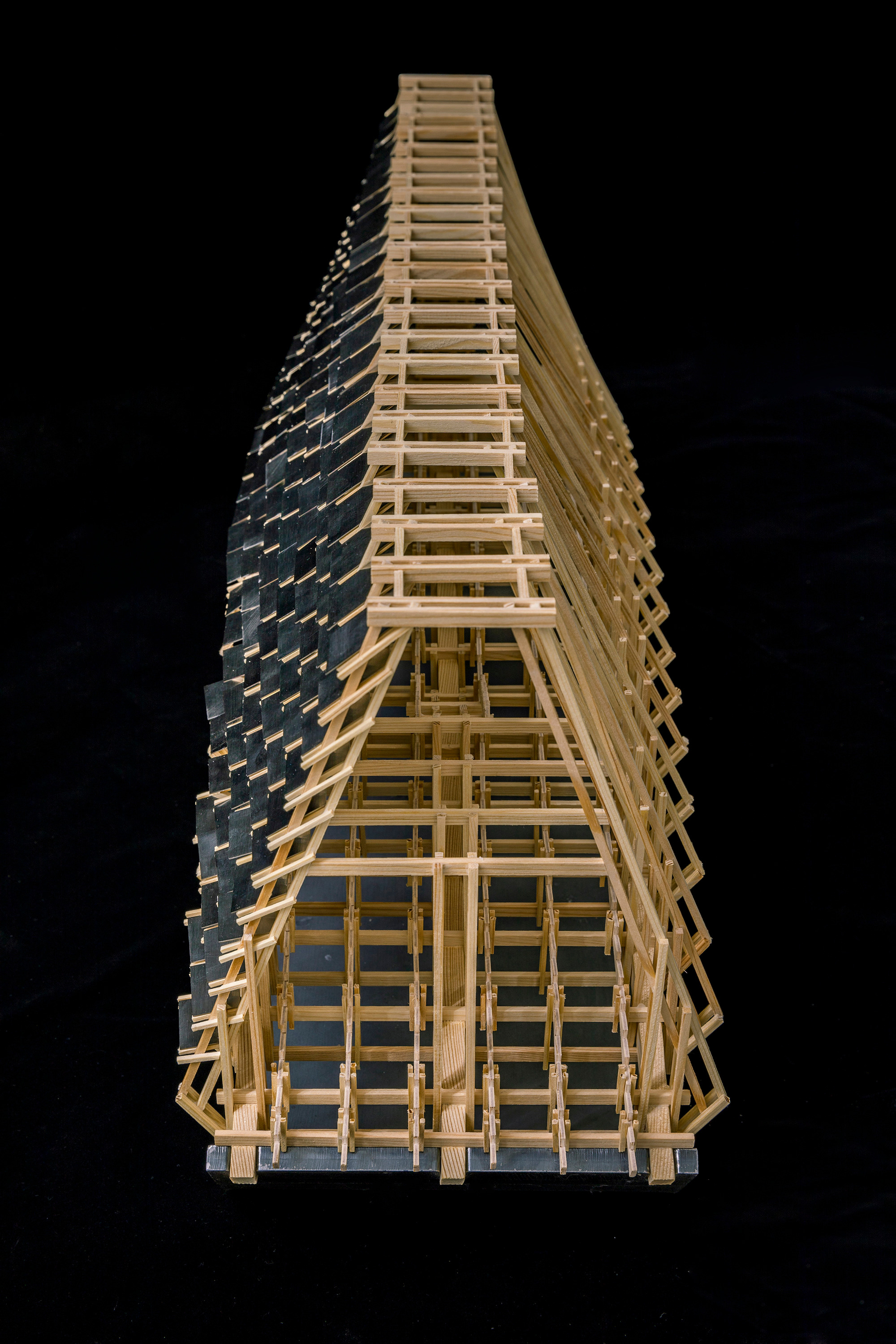
The bridge uses three large, curved beams as its main structural components; these extend parallel to one another at a spacing of 2.8 m. For ease of manufacturing and transportation, the beams each arrived in three pieces and were joined together on-site using steel-strengthened bolts. To form the structure of the bridge, smaller wooden components were interlocked and anchored to these finished beams. These components serve as sub-beams on the upper and lower levels and are combined with upward elements to form a stable triangle of forces. (While the timber and style pay homage to the past, all timber and metal components were finished with modern industrial technology and methods.)
The roof plane is a rectangle, and the side wall planes are rectangular with only their lower edge being a curve. To provide structural stability for the interior space, since the covered bridge’s interior roof height varies with the stepped bottom curve that visitors walk along, horizontal connecting rods are included in the middle section and two viewing platforms have been built on either end of the bridge.
Structural consulting was provided by LaLu Structural Consulting with construction by Shenzhen Zhenhui Architectural Engineering Co. Ltd.
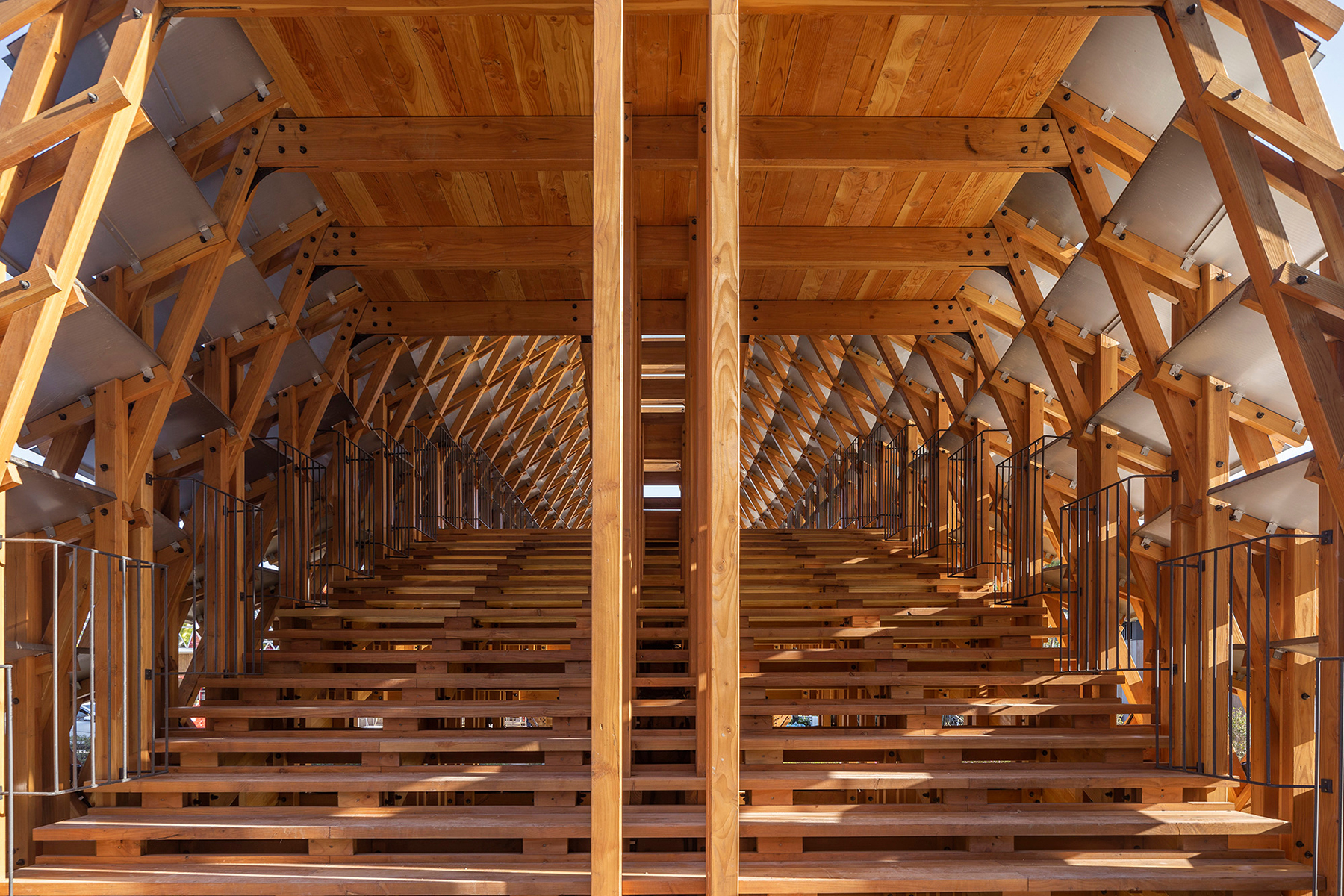
The bridge’s covering serves multiple purposes. It protects the bridge — and its users — from rain and direct sunlight, extending the timber’s service life and providing a sheltered space for users. The covering also enhances the overall structural stability of the crossing. Layers of exterior metal plates were placed as aesthetic elements that also further protect the timber from the area’s abundant rainfall.
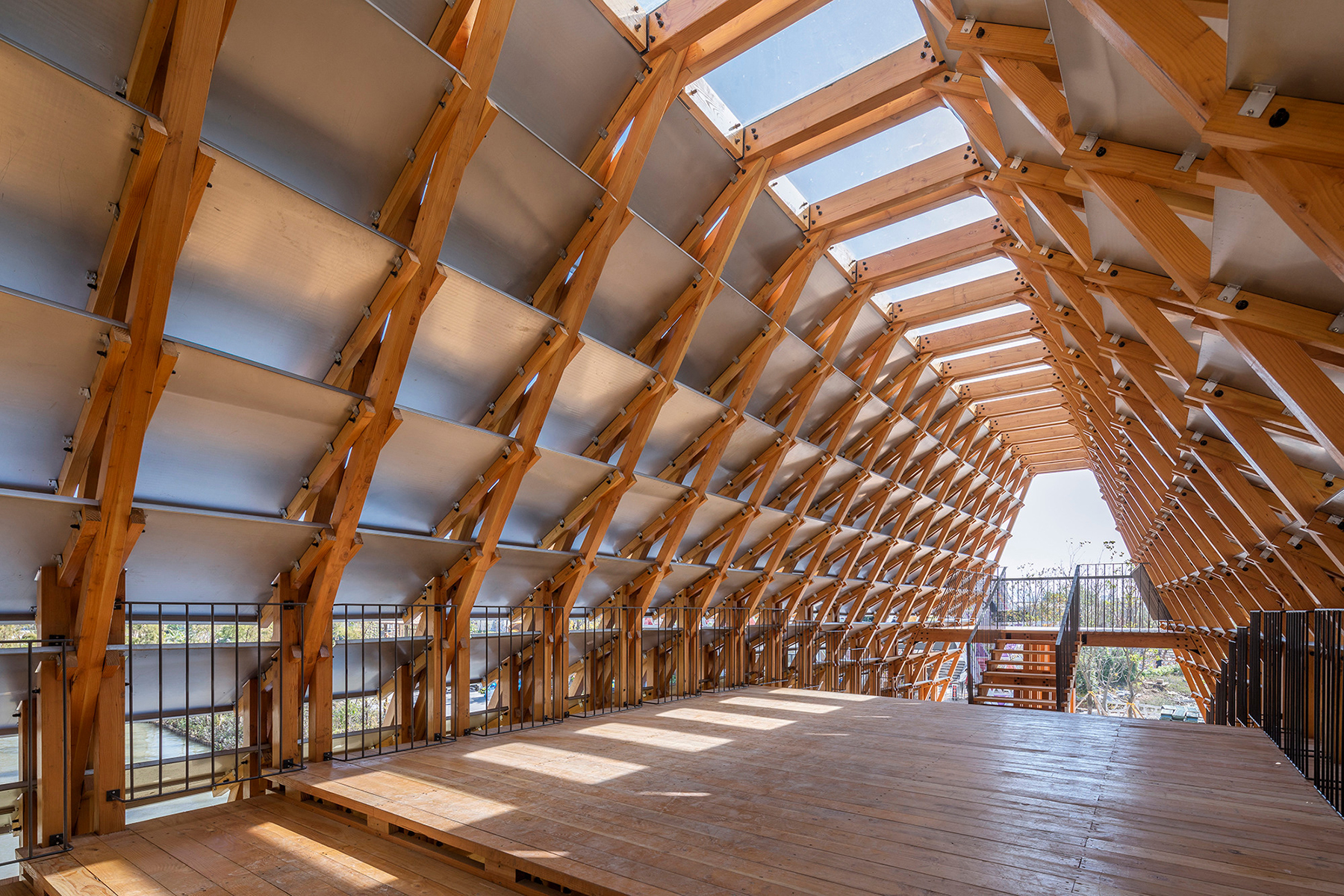
The bridge has been designed such that the water can be glimpsed between the timber elements on the walkway and sidewalls. In addition, a 1,500 mm wide daylighting belt in the middle of the roof enables sunlight to enter the bridge’s interior, creating shadows. The juxtaposition of shimmering water, light, and shadows has been designed to generate a sense of calmness an openness in the minds of visitors passing through, according to LUO studio.
The bridge was completed in January.



